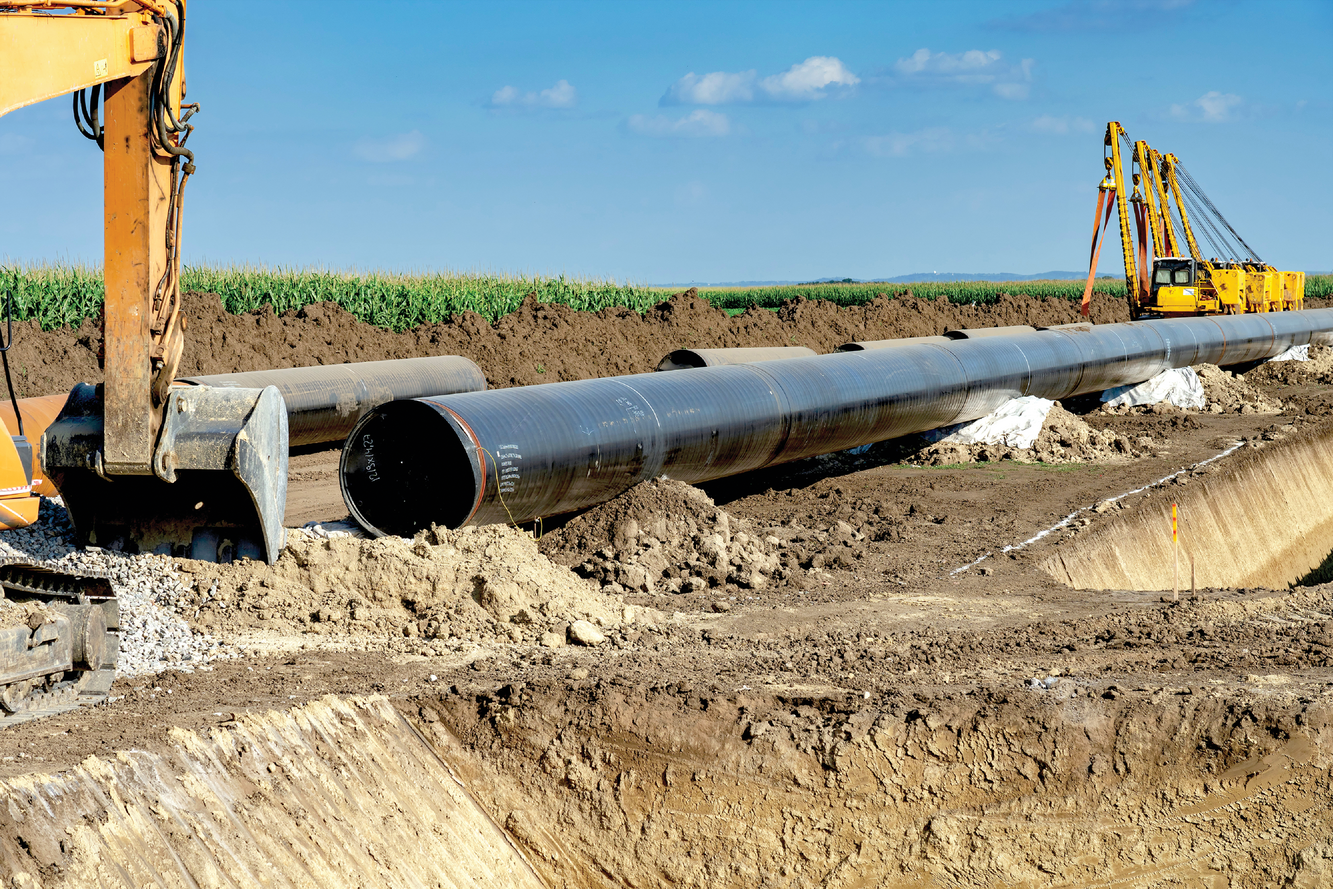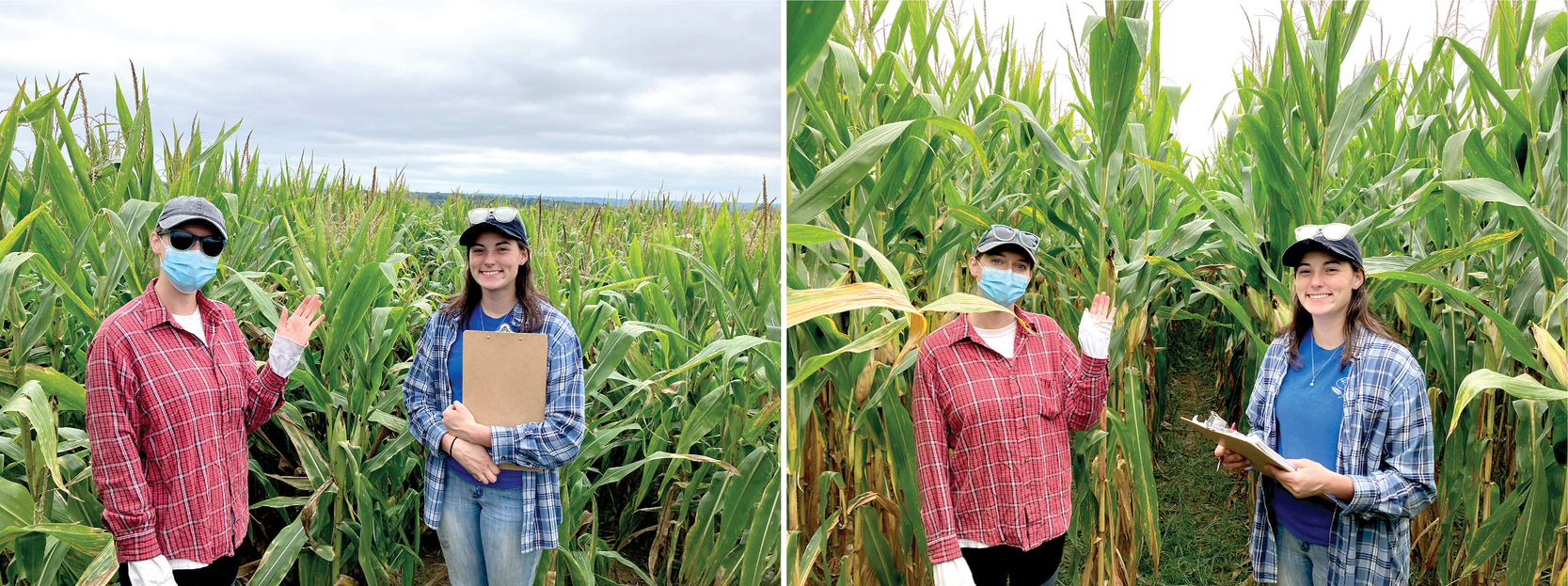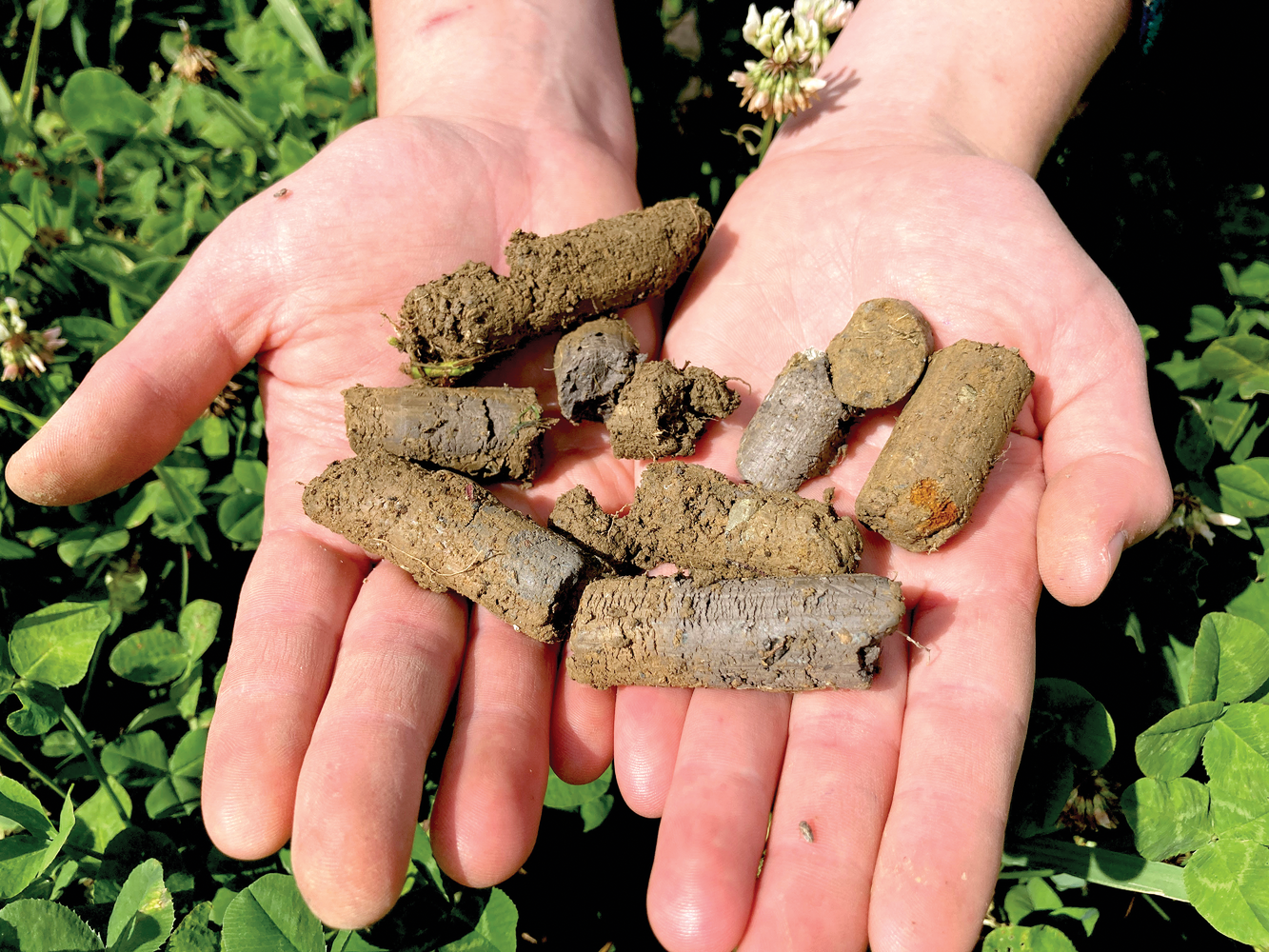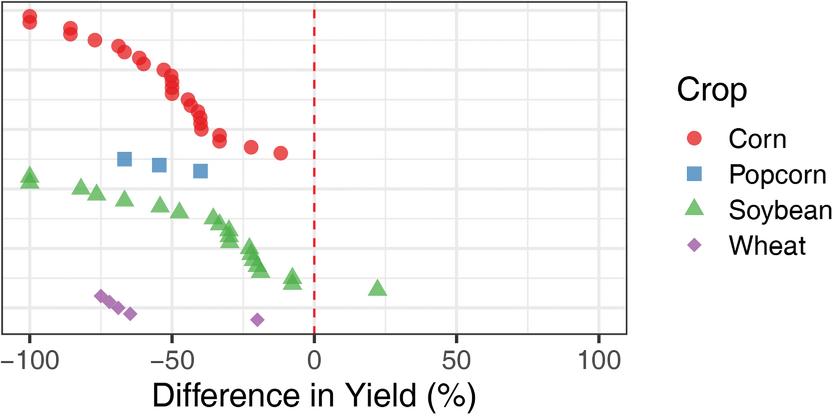How Pipeline Installations Impact Agricultural Fields and Landowners


Underground pipelines are a safe and effective method for transporting oil and natural gas to fuel our lifestyles and economy. New pipeline installations are on the rise and primarily installed in rural areas. But what are the consequences of this energy infrastructure on soil and crop-
lands? Earn 0.5 CEUs in Soil & Water Management by reading the article and taking the quiz at https://web.sciencesocieties.org/Learning-Center/Courses.
The United States has the most extensive oil and natural gas pipeline system in the world with more than 2 million miles of existing pipeline (U.S. Bureau of Transportation Statistics Staff, 2021). Globally, thousands of miles of pipelines are being installed each year (CIA World Factbook Staff, 2021), and pipeline mileage has increased 8.5% over the past decade in the United States alone (U.S. PHMSA Staff, 2020). Pipeline installation typically involves excavating a trench, installing the pipeline in this trench, backfilling the trench with the excavated soil, remediating the site, and finally releasing the land back to the landowners. Right-of-way easements typically dictate that the area be replanted with non-woody vegetation, such as hay, grassland, or annual crops.

Pipelines are commonly installed through agricultural fields. In these instances, right-of-way easement payments often compensate farmers for crop losses over a period of three to five years, often providing 100% of estimated crop loss in the first year and reducing payments each subsequent year until the final year is reached. The rational here is that in a period of three to five years, land over the pipeline will be fully remediated, and crop yields will return to levels prior to pipeline installation. However, the basis for this payment scheme is poorly justified. Pipelines are installed in many different environments, soils, and cropping systems throughout the United States. Are there common outcomes from this disturbance and installation?
Previous Pipeline Studies
To find out if there was any consensus in past studies, researchers conducted a literature review and quantitative synthesis to determine the impact of pipelines on soil and agricultural crop yields (Brehm & Culman, 2022). Thirty-four studies across eight countries reported impacts ranging from 0 to 53 years after pipeline installations with roughly three out of four studies occurring within the first 10 years of installation. Overall, most studies documented soil degradation with pipeline installation through increased compaction and soil mixing when compared with adjacent, undisturbed areas. Averaged across all studies, aggregate stability values decreased 45%, water infiltration was reduced 86%, and compaction via penetration resistance increased 41% over pipeline areas relative to adjacent areas that served as a control. Soil mixing, that is subsoil mixed with topsoil, was also evident in most studies as clay content increased 17% and soil carbon decreased 21%. The documented soil degradation resulted in declines in plant productivity as 15 out of 25 studies reported declines in crop yields (6–46% reductions) and six out of nine studies reported decreased biomass from natural ecosystems (2–57% reduction). This literature review and synthesis showed widely universal degrading effects that pipeline installations have had on soil and crop resources.
Contemporary View of Installations Using Best Management Practices
Critics have voiced that many of the studies in the above literature review are dated, and contemporary installation uses best management practices to both minimize disturbance and remediate soils post-installation. For example, soil within pipeline trenches were historically excavated as a “single lift” where the entire soil profile was removed with little to no attention paid to separating topsoil from subsoil. Current best practices are now “double lifts” where topsoil and subsoil are lifted from the trench area individually. Double-lift exaction strives to reduce soil mixing between horizon layers, maintaining the productivity of the topsoil for future use. In the Brehm & Culman (2022) literature review, only 38% studies specified that the installation used double-lift techniques.

To address these concerns, researchers at Ohio State University conducted an on-farm study across three independently operated pipelines in Ohio to document the impacts of pipeline installation with contemporary installation and remediation practices (Brehm & Culman, 2023). The study was conducted at 29 sites across 8 Ohio counties, four to five years after pipeline remediation was completed.
The researchers observed significant degradation in soil physical properties with a 15% average increase in surface penetration resistance and 14% average reduction in soil aggregate stability over pipelines, relative to adjacent non-disturbed areas of the field. Despite all pipelines using double-lift techniques, soil horizon mixing was still evident with significantly higher clay content and significantly lower soil carbon in the surface 8 inches of pipelined areas.
Soil degradation from pipeline installation resulted in average crop yield decreases between 7 and 24% in corn and soybean. Negative impacts on soil and crops persisted five years following pipeline installation despite the current best management practices.
Landowner Experiences With Pipeline Installations
Finally, the research team was interested in capturing the collective experiences of landowners in having pipelines installed on their land. Two of the three pipelines in the above study were subject to eminent domain, so landowners had little choice but to accept a pipeline easement on thei property. Recognizing that the on-farm research described above was limited in how many fields could be sampled, the team sought to expand the scope of inference and systematically poll landowners.
The research team sent out 600 surveys to a random sample of landowners along the three pipeline routes and had a 32% response rate with responses from 22 Ohio counties (Culman et al., 2022). The responses were distributed over the three pipelines relatively equally, and the responses to the questions were consistent across the pipelines. Four main findings were discovered, as outlined below.

First, pipeline installation often occurred when soil was too wet to work. Seventy-two percent of respondents answered “Yes” to the question, “During the installation process, were there times when soil conditions were not optimal, but pipeline installation continued?” Those who answered “Yes” were asked to rate how sub-optimal the conditions were during installation. Fifty-six percent said the soil conditions were extremely sub-optimal, defined as “Soils were completely saturated, worked during or immediately after large rain events.” Second, soils were often not remediated to their original condition after pipeline installation. Four to five years after site remediation was complete, only 18% answered “Yes” to the question, “Do you feel that your land is generally back to the condition it was prior to pipeline installation?” By contrast, 82% of the respondents answered “No” to this question. Third, yields were negatively impacted by pipeline installation. The respondents were asked to report yields they had measured in areas over the pipeline relative to an adjacent, unaffected area.
Respondents provided 52 paired yield measurements in corn, popcorn, soybean, and wheat. All but one response indicated yield reductions over the pipeline right of way compared with an adjacent area. Yield reductions across crops ranged from 22% more yield to 100% less yield (total crop failure) with average declines of 40–60%. Finally, landowners had mixed, but often negative, experiences with the installation process.
Roughly half of the respondents (56%) were not satisfied with the experience compared with satisfied (32%). About one-third of the respondents (36%) felt that they were fairly compensated for the easement while 47% did not feel fairly compensated. A quarter (27%) would be open to negotiating a future easement compared with 56% who said they would not be open to another pipeline easement.

Consistent Signals
To date, all available information collectively show that the process of pipeline installation represents a large disturbance event that will likely result in soil compaction, soil horizon mixing, and subsequently, reduced crop yields that persist beyond crop loss compensation payment schemes. Underground pipelines are an important component of the nation’s energy portfolio, and more pipelines are projected to be installed in the coming years. But farmers should be appropriately compensated for soil degradation and sustained crop yield losses from these activities. Crop loss monitoring and soil remediation practices should be the focus of research efforts moving forward.
Additional details can be found here: https://go.osu.edu/pipeline-study
References
Brehm, T., & Culman, S. (2022). Pipeline installation effects on soils and plants: A review and quantitative synthesis. Agrosystems, Geosciences & Environment, 5(4), e20312. https://doi.org/10.1002/agg2.20312
Brehm, T., & Culman, S. (2023). Soil degradation and crop yield declines persist 5 years after pipeline installations. Soil Science Society of America Journal, 87, 350–364. https://doi.org/10.1002/saj2.20506
CIA World Factbook Staff. (2021a). Pipelines—The world factbook. https://www.cia.gov/the-world-factbook/field/pipelines/
Culman, S., Brehm, T., & Jackson-Smith, D. (2022) Landowner experiences with natural gas pipeline installations in Ohio. Ohio State University Extension, https://go.osu.edu/pipelinesurvey
U.S. Bureau of Transportation Statistics Staff. (2021). U.S. oil and gas pipeline mileage. U.S. Bureau of Transportation Statistics. https://www.bts.gov/content/us-oil-and-gas-pipeline-mileage
U.S. PHMSA Staff. (2020). By-decade inventory. https://www.phmsa.dot.gov/data-and-statistics/pipeline-replacement/decade-inventory
Self-Study CEU Quiz
Earn 0.5 CEUs in Soil & Water Management by taking the quiz for the article at https://web.sciencesocieties.org/Learning-Center/Courses. For your convenience, the quiz is printed below. The CEU can be purchased individually, or you can access as part of your Online Classroom Subscription.
- Companies installing pipelines through agricultural fields typically provide crop loss compensation payments that last:
- 1 year.
- 3–5 years.
- 10 years.
- 25 years.
- Single-lift trenching is considered the current best practice for pipeline installation.
- True.
- False.
- The literature review found that soil type was a major determinant if a soil was compacted or not following pipeline installation.
- True.
- False.
- The majority of landowners in the Ohio survey responded that:
- Their land was back to the original condition a few years after pipeline installation.
- Crop yields were not impacted by pipeline installation.
- They were satisfied with their experience of having a pipeline installed.
- They would not be open to negotiating a future easement for another pipeline.
- The on-farm pipeline study in Ohio found:
- Consistent trends of soil degradation across all three pipelines.
- Degradation only occurred with one out of the three pipelines.
- That best management practices resulted in no evidence of soil degradation.
- Soil degradation was detected within the first one to three years, but sites were completely remediated after five years.
Text © . The authors. CC BY-NC-ND 4.0. Except where otherwise noted, images are subject to copyright. Any reuse without express permission from the copyright owner is prohibited.








